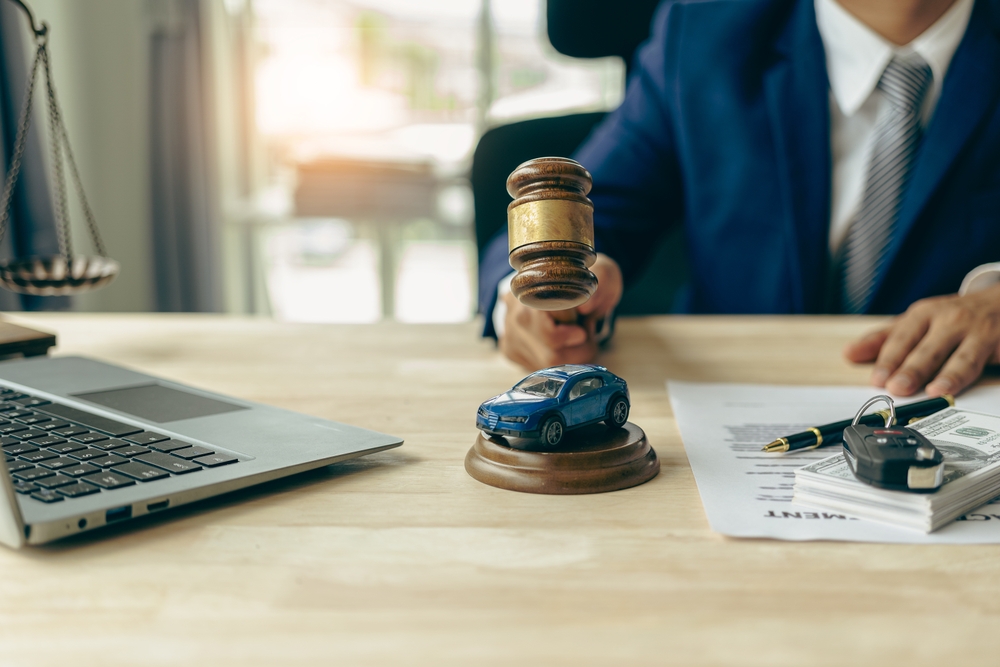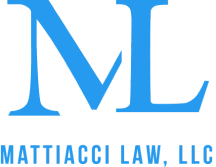
Author: John Mattiacci | Owner Mattiacci Law
Published April 28, 2025

Table of Contents
ToggleA car accident can leave you with mounting medical bills, lost wages, and uncertainty about your legal options. You may be wondering, how do you start a car accident lawsuit, and what steps are involved in pursuing compensation?
To start a car accident lawsuit, you must file a Complaint in Civil Action, serve the defendant, engage in the discovery process, and proceed to settlement negotiations or trial.
With decades of experience handling personal injury claims, I have helped countless accident victims understand their legal rights and obtain fair compensation. In this article, I’ll walk you through each step of the car accident lawsuit process so you can make informed decisions about your case.
Pre-Lawsuit Considerations
Immediate Steps After an Accident
Before filing a lawsuit, certain actions should be taken immediately after a car accident:
- Seek Medical Attention – Even if your injuries appear minor, obtaining a medical evaluation is crucial as it provides documentation that can support your legal claim
- (CDC).
- Report the Accident – Notify law enforcement and request a police report, as this serves as an official record (NHTSA).
- Collect Evidence – Capture photographs of the accident scene, the damage to vehicles, and any injuries sustained. Obtain contact details from witnesses and gather insurance information from the other drivers involved.
- Notify Insurance Providers – Promptly inform your insurance company to begin the claims process (NAIC).
Insurance Claims and Settlement Negotiations
Many car accident disputes are resolved through insurance claims before a lawsuit is filed. The at-fault driver’s insurance may offer compensation, and negotiations may lead to a settlement. However, if the settlement offer does not cover medical expenses, lost wages, and other damages, filing a lawsuit may be necessary.
How Does Pennsylvania’s Choice No-Fault System Affect Car Accident Lawsuits?
Pennsylvania follows a choice no-fault auto insurance system, meaning drivers must select either limited tort or full tort coverage when purchasing a policy. This decision impacts whether you can sue for pain and suffering after an accident.
- Limited Tort Coverage – Restricts your right to sue for non-economic damages (like pain and suffering) unless the injury is classified as “serious” under Pennsylvania law.
- Full Tort Coverage – Allows you to pursue compensation for pain and suffering without restriction, regardless of injury severity.
If you selected limited tort, you may still sue for pain and suffering if:
- The at-fault driver was under the influence of drugs or alcohol.
- The accident was caused by an out-of-state driver.
- The at-fault driver was uninsured.
- You suffered serious, permanent disfigurement or impairment.
Understanding Pennsylvania’s insurance laws is crucial in determining whether you can seek full compensation after a car accident. (Pennsylvania Insurance Department)
Filing a Car Accident Lawsuit
Initiating the Legal Process
To formally begin a lawsuit, a Complaint in Civil Action must be filed in the appropriate court. This document outlines the claim, the parties involved, and the damages sought.
- Statute of Limitations – In most states, the deadline for filing a car accident lawsuit is two years from the date of the accident. Missing this deadline may prevent legal action (Legal Information Institute).
- Venue Selection – The lawsuit must be filed in the appropriate jurisdiction, typically where the accident occurred or where the defendant resides.
Serving the Defendant
Once the complaint is filed, the defendant must be officially informed through a procedure known as service of process. This step ensures that the defendant is notified about the lawsuit and given the chance to respond appropriately.
Litigation Process
Defendant’s Response
Once served, the defendant may:
- File an Answer – Responding to the allegations in the complaint.
- Motion to Dismiss – Requesting the court to dismiss the case if it lacks legal grounds.
- Counterclaim – Asserting claims against the plaintiff.
Discovery Phase
The discovery process allows both parties to exchange information and evidence. This stage includes:
- Interrogatories – Written questions that must be answered under oath.
- Depositions – Recorded testimonies given under oath.
- Requests for Documents – Seeking medical records, repair estimates, and insurance policies.
What Happens If the At-Fault Driver is Uninsured or Underinsured?
Not all drivers carry enough insurance to cover accident-related damages. In Pennsylvania, you can still recover compensation through:
- Uninsured Motorist (UM) Coverage – Pays for your damages if the at-fault driver has no insurance.
- Underinsured Motorist (UIM) Coverage – Covers the gap if the at-fault driver’s policy limits are insufficient.
Steps to take if the at-fault driver is uninsured or underinsured:
- File a Claim with Your Insurer – Notify your provider immediately if you have UM/UIM coverage.
- Gather Documentation – Obtain a police report, medical records, and proof of damages.
- Pursue Legal Action – If UM/UIM coverage is unavailable, you may file a lawsuit against the driver personally.
Pennsylvania law requires insurance companies to offer UM/UIM coverage, but drivers can opt out in writing. If you waived this coverage, recovering compensation may be more challenging. (Pennsylvania Department of Transportation)
Comparison of Lawsuit and Settlement Process
To better understand the legal process, the table below compares key differences between pursuing a lawsuit and negotiating a settlement.
| Aspect | Lawsuit | Settlement |
|---|---|---|
| Duration | Several months to years | Can be resolved within weeks or months |
| Cost | Court and attorney fees may apply | Fewer legal fees and expenses |
| Control Over Outcome | Decision made by judge/jury | Plaintiff has control over negotiations |
| Stress Level | Higher due to court proceedings | Lower, as disputes are resolved privately |
| Likelihood of Appeal | Possible if verdict is unsatisfactory | No appeal, as terms are agreed upon |
Alternative Dispute Resolution
Mediation and Arbitration
Before going to trial, parties may attempt to resolve the dispute through alternative methods:
- Mediation – A neutral third party facilitates discussions to reach a settlement.
- Arbitration – A legally binding process where an arbitrator decides the outcome based on presented evidence (American Bar Association).
Trial and Post-Trial Considerations
Trial Process
If a settlement is not reached, the case proceeds to trial, which involves:
- Jury Selection – If applicable, a jury is chosen to hear the case.
- Opening Statements – Attorneys present an overview of their arguments.
- Witness Testimonies – Experts and eyewitnesses provide statements.
- Closing Arguments – Final statements are made before deliberation.
- Verdict – The judge or jury issues a final decision.
Appeals
If a party disagrees with the verdict, they may file an appeal, requesting a higher court to review the case.
Why Choose Mattiacci Law?
At Mattiacci Law, we understand the challenges accident victims face when pursuing legal action. Our firm has a proven track record of successfully handling personal injury claims and securing the compensation our clients deserve. When you work with us, you benefit from:
- Personalized Legal Guidance – We take a client-focused approach, ensuring every case receives the attention it deserves.
- Aggressive Representation – We fight tirelessly against insurance companies and negligent parties to maximize your recovery.
- No Fees Unless We Win –Our contingency fee structure means you won’t pay anything upfront unless we win your case.
If you or a loved one has been injured in a car accident, don’t wait to take action. Contact Mattiacci Law today for a free consultation at 215-914-6919 and let our experienced team fight for your rights.
Related Content:
- How Long Does a Philadelphia Personal Injury Lawsuit Take?
- Everything You Need to Know About Philadelphia Personal Injury Lawsuits
- How to File a Personal Injury Lawsuit in Philadelphia
- What is the Personal Injury Lawsuit Process in Pennsylvania?


